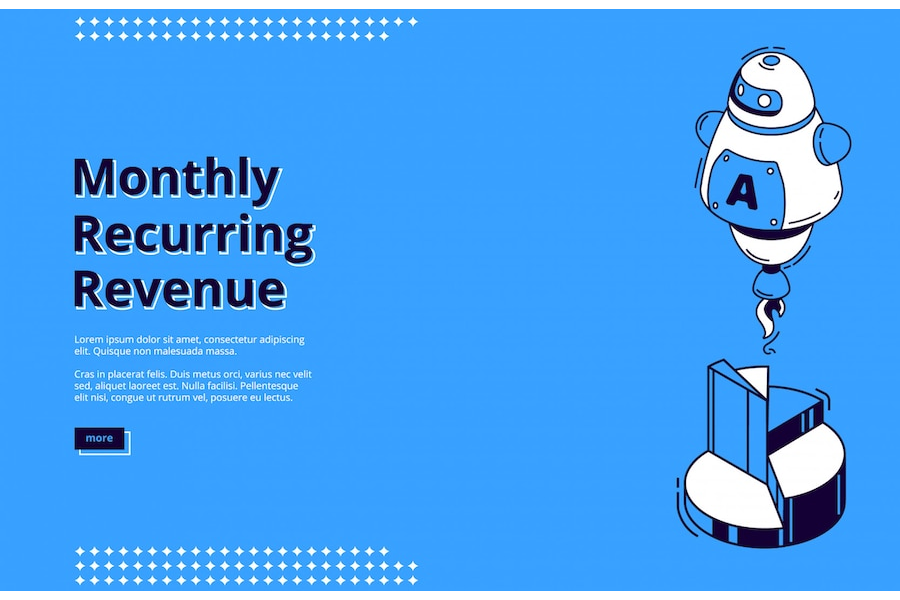Gross revenue and net profit are terms you have probably heard as a business owner. But do you know what they are and how they impact your business?
They aren’t just any metric; we are talking about the two most important metrics in a business. Keep reading as we compare revenue vs profit and discuss everything we know about them.

Revenue vs. Profit: Key Distinctions
As an entrepreneur or business owner, you should know the differences between revenue and profit and their formulas. Why? Because you need to know how to grow your profits to thrive. But you can’t be sure you’re growing if you don’t know your current profit.
Besides that, it’s impossible to leave revenue out when calculating profits, so it’s also important. Below, we highlight revenue vs profit and key differences.
Revenue
Revenue, the top line on the income statement, is the total earnings from a company’s business activities before expenses.
For example, think of a restaurant that sells local food.
If the restaurant receives income from investments or renting, its revenue stream includes all the sources of income. This shows that revenue measures a company’s ability to generate income.
Meanwhile, EBITDA stands for earnings before interest, taxes, depreciation, and amortization. It measures the company’s earnings before interest and taxes after deducting operating expenses. It measures the company’s ability to generate operating income.
Profit
Profit, the bottom line income statement, is the company’s net income within a time frame. There are different ways to measure profit like gross and operating profit.
The gross profit is the revenue of your company minus the cost of goods sold (COGS). For example, if the revenue generation is IDR 1,000,000 and the COGS is IDR 600,000, your gross profit is IDR 400,000.
On the other hand, operating profit is gross profit minus all of the business’s operational expenses, like rent, utilities, and payroll. Overall, profit measures a company’s financial performance.
Below is a table showing the difference between profit and revenue.
| Revenue | Profit |
| It’s the total income from all sources of income | It’s the net income (total income – total expenses) |
| Found at the top of the income statement only | Found throughout the income statement and at the bottom |
| Focuses only on the inflow of cash. | Considers both inflows and outflows |
| Accounting rules and standards have little impact | Affected by accounting rules |
| It measures the company’s sales performance | It reflects a company’s overall financial health |
Gross Revenue: The Starting Point
Gross revenue is the top line of the income statement, so we refer to it as the starting point for calculating financial performance.
We calculate gross revenue by multiplying the total quantity of units sold by the unit price. In each revenue cycle, consider all sources of income before recording revenue (revenue recognition).
Gross Revenue = Quantity of Units Sold × Unit Price
For example, if a shoe retailer sells 500 pairs of shoes at IDR 500 each, the gross revenue would be:
Gross Revenue = 500 × 500 = IDR 250,000.
The primary factor that drives revenue growth is demand. As a business owner who aims to increase revenue, you should know the factors that impact revenue, like competition, pricing, and marketing and sales strategies. These would help with revenue forecasting.

Operating Costs and Expense Management
Running a business without operating expenses is impossible, but you must find new ways to control them.
Expenses are fixed (e.g., rent, salaries) or variable (e.g., raw materials, utilities). Effective cost and revenue management is essential for optimizing profitability. Here is the formula for calculating operating costs:
Operating Costs = Fixed Costs + Variable Costs
For example, if your company’s fixed cost is IDR 10,000 per month and variable cost is IDR 50 per unit produced. If it produces 1,000 units in a month, the operating costs would be:
Operating Costs = 10,000 + (50 ×1,000) = IDR 60,000
Net Profit Margin: The Ultimate Indicator
Net profit margin (also called profit margin percentage) calculates and compares the net profit to the revenue.
The profit margin formula is:
Net Profit = Total Revenue – Total Expense
Net Profit Margin = (Net Profit / Revenue) ×100
For example, if a company’s revenue generation is IDR 1,000,000 and its net profit is IDR 200,000, the net profit margin would be:
Net Profit Margin = (IDR 200,000 / IDR 1,000,000) ×100 = 20%
What Impacts Profit?
All of the factors that affect revenue affect the profit. However, COGS and expenses impact profit more. Looking at the calculation above, if the total expense were IDR 400,000, the company would be left with an IDR 600,000 net profit.
This indicates that the company needs to cut costs. Keep reading to learn new ways to drop these costs and increase profits for your company.

Factors Impacting Profit Margins
Profit margin analysis can help determine what factors affect your money’s health.
We’ve identified some of them below:
- Efficient Cost Management: Cutting costs for your business helps increase profits.
- Enhanced Pricing Strategies: Review your pricing model and choose one that consumers will love to boost revenue.
- Focus on Customer Value: Focus on impressing customers to grow your revenue and profit. The more customers find value, the more likely they will continue to buy.
In the case of the restaurant, they should source fresh food ingredients locally and cut costs by negotiating with suppliers. This way, they can increase their profit margin ratio by cutting costs and increasing value.
Revenue Growth Strategies
The secret to growing profit is cutting cost and revenue growth. So, you need to develop revenue growth strategies.
Imagine if the restaurant increased its revenue to IDR 1,200,000 and dropped its cost to IDR 200,000. This means that its profit will grow to IDR 1,000,000.
Below, we explore different growth strategies for a better revenue model:
- Market Expansion: Research and explore new market segments or locations that would enjoy your offerings. You can penetrate new markets with solid marketing and sales strategies,
- Product Diversification: Launch new products and services that your customers want. Next, take advantage of cross-selling and upselling to boost revenue streams.
- Strategic Partnerships: You can partner with distributors in and outside the country to access new distribution channels. This way, your products can reach your partners’ existing customer base.
For example, a software company can grow revenue with new products to satisfy different market segments. Lastly, you should avoid making mistakes when recording or calculating your income to avoid revenue leakage.

Pricing Strategies and Profit Maximization
Earlier, we discussed the importance of a pricing strategy in profit maximization. This leads us to the profit motive, a driving force behind businesses aiming to boost profits by boosting revenue and reducing costs.
In this section, we expand on pricing strategies that will maximize profit margins:
- Value-Based Pricing: This is a price strategy where the increment of value results in increased cost. This helps customers value your offer. To ensure this, you should focus on quality, features, and benefits rather than solely on production costs. Apple is a famous company that adopts value-based pricing. With each new smartphone launch, there is a higher value offer. For example, the iPhone 15 has the iPhone 15 Pro and iPhone 15 Pro Max, which are more expensive.
- Dynamic Pricing: Due to demand fluctuation and competitor pricing, you may consider dynamic pricing, where price increases and decreases are rapid.
- Bundling and Packaging: Providing value-added or bundling for upsell and cross-sell products.
- Promotional Pricing: This is for short-term revenue objectives where you use discounts and incentives to stimulate demand for your product or service.
These pricing models can be used together or separately, but you should focus on one at a time for revenue and profit maximization.
Cost Reduction Techniques
One of the biggest strategies for maximizing profit is dropping costs. With more profit, you can increase your investment in promoting your business and pay employees and yourself. But how do you reduce costs?
Below is how:
- Supply Chain Optimization: Make your supply chain process simple and negotiate with your suppliers to drop costs, especially if it’s a long-term relationship.
- Adopt Automation: Use an automation system to automate repetitive and time-consuming tasks. Also, eliminate unnecessary and money-consuming tasks.
- Work Remotely: Working from home is a great way to cut company costs. Invest in a minimal office workspace in your home. Otherwise, if you need to meet your employees, cut costs by renting a space for short-term use.
Lastly, deliver on your promise so you don’t waste resources on returning or refunding dissatisfied customers. It costs a lot to return and give customers another product. If care is not taken, it can result in losses.
Measuring Profitability: Ratios and Formulas
When it comes to profit, there are different formulas to measure it to assess a company’s financial health.
Below are more formulas and profit-related terms to evaluate your revenue, assets, and equity impact:
- Gross Profit Margin: This helps you find the percentage of revenue retained after deducting the cost of goods sold (COGS).
Formula: Gross profit / Revenue x 100
- Net Profit Margin: This is the net income after removing all expenses, including taxes and interest. It’s also called the profit margin ratio.
Formula: Net profit / Revenue x 100
- Profit and Loss Statement: A profit loss statement is an income statement. It summarizes a company’s revenue, expenses, and profit or loss over a time frame (usually a quarter or a year). You can either have an overall profit or loss.
Formula: Net Profit = Total Revenue – Total Expenses.
- Return on Investment (ROI): ROI is another crucial metric you can calculate with profit.
Formula: Net profit / Total investment X 100% :
With the help of these formulas, you can access your business health performance and know what areas to improve, especially with expenses. You can see whether you need to improve your marketing strategy or cut costs.

Profit vs. Cash Flow: Understanding the Differences
Profit and cash flow are two related terms but distinct. One is the actual net income of the company, while the other is the inflow and outflow of money.
We discuss it further using the table below:
| Profit | Cash Flow | |
| Definition | Profit is the difference between revenue and expenses. Its purpose is to measure the financial performance of a company. | Cash flow is the movement of cash in and out of a business. It measures a company’s ability to generate income. |
| Measurement | Profit is calculated using costs and revenue gathered over time. | Cash flow is calculated in real-time by tracking actual cash inflows and outflows at a given period. |
| Timing | Profit may not align with cash flow due to timing differences in expenses and revenue recognition. This leads to differences between reported profit and actual cash position. | Cash flow reflects the real-time of cash receipts and payments. |
Financial Planning for Sustainable Growth
Planning for your financial health is essential, as every other aspect of your business counts on it. You need to create a budget, set and allocate resources to avoid wasting resources and identify expenses from the onset.
Below is information on how to make a financial plan for sustainable growth:
- Set goals: Outline clear financial goals, such as revenue targets, profit margin ratio, and ROI level.
- Budgeting: Create a budget to allocate cash for all business activities, like sales, marketing, operations, and capital expenditures.
- Risk Management: Firstly, you need to know about possible financial risks like market volatility and regulatory changes. Then, develop a plan to control them, like diversification, insurance, and contingency planning.
It’s essential to take risks, but always ensure they are calculated. The more risk in business, the greater the reward. How much are you willing to sacrifice, and what is your risk appetite? Always consider these before you take any risk.
Frequently Asked Questions
How do you calculate profit from revenue?
Net Profit = Total Revenue – Total expenses. It indicates how much you have after removing expenses.
How can total revenue rise but profits fall?
Your revenue can be relatively high, and your profit can be low due to the costs of running the business. If fees are high, they will eat into your revenue, leaving you with a small profit or a loss.
Can profit be higher than revenue?
Profit could never be more than revenue because profit is gotten after expenses are subtracted from revenue.